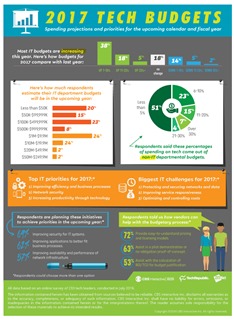クラウド対応ADC: ビジネスにとってのメリットは何ですか?

クラウド対応のアプリケーション配信コントローラ (ADC) は、従来の ADC とは異なります。カスタム ハードウェアまたは COTS ハードウェアに導入できる、アプリケーションの高速かつ安全で可用性の高い配信と導入の両方のニーズをサポートするスケーラブルなソフトウェア ソリューションです。 クラウド対応の ADC は、従来の安定性、セキュリティ、スケールと、最新の柔軟性、クラウド、DevOps 対応のプログラム機能を組み合わせた、データセンター アーキテクチャに対する最新の 2 層アプローチを可能にします。
ビジネスにとってのメリットは何ですか?
DevOps やクラウドが登場するずっと前から、BPM は存在していました。 編集者によって、ソフトウェア主導の奇妙な世界に飛び込むことを強制されなかった人たちにとって、これがビジネス プロセス管理です。 いいえ、恨んではいませんが、傷は残ります。ありがとうございます。 BPM のすぐ後にビジネス プロセス最適化 (BPO) が続きましたが、もちろんそれは、BPM の最初の波がビジネスに旋風を巻き起こし、俊敏性 (変化するビジネス条件に基づくプロセスの迅速な変更) を実現するとともに生産性を向上させる手段として、重要なビジネス プロセスを自動化および調整する方法をビジネスに教えた後のことでした。 最適化は後から行われましたが、実現しました。
クラウド、DevOps、そしてますます増えている NetOps に関する話題も、自動化の利点に焦点を絞っています。 具体的には、市場投入までの時間を短縮し、運用コストを削減する能力を促進し、圧倒的なアプリケーションの増大に直面しても IT 組織が実現できる規模を拡大します。 敏捷性があるからです。
あまり話題に上らないのは、2 番目の要素、つまり生産性です。 自動化によって生産性が向上するのは当然のことのように思えるかもしれません。 自動化によってタスクの速度が向上する場合、当然、自動化を活用する個人は、一定期間内にさらに多くのタスクを実行できるようになります。 なぜなら、生産性は、期間あたりに完了したタスク数で測定されるからです。 それが数時間か数日か、数週間か数か月かは問題ではありません。 それは量の問題であり、投資の結果として量が増加しているかどうかの問題です。 クラウド、自動化、またはタスクをより迅速に完了できるアプリケーションへの投資などです。
さて、通常、生産性という観点からアプリケーションについて話すとき、人々は必ず CRM システムや RFID タグをスキャンする在庫管理アプリ、あるいはビジネスに非常に関連するものを思い浮かべます。 私たちは、IT 部門が、アプリケーションを提供するソフトウェア定義サービスを管理、監視、展開するために使用するアプリケーションについて、あまり考えません。
しかし、私たちはそうすべきです。 ビジネスの成功は、金額と成長によって測られます。 そして、スピードとアプリ展開の頻度の増加の必要性によって増大する IT 予算ほど、両方を蝕むものはありません。 どちらも、きちんとした数式にすると、ビジネスで生産性を測定するために使用されるものとよく似ています。

生産性の力を軽視しないでください。 今後の(2017 年)予算に関する最近の Tech Pro Research の調査では、プロセスと生産性の向上に関する支出と優先事項が、調査対象者の上位 3 位に常にランクされました。 2017 年の IT 最優先事項のうち、1 位と 3 位はプロセスの改善と生産性の向上に関連していました。
ビジネスの成功に対する IT の責任がますます直接的になっているため、IT のプロセスの改善と生産性の向上も含まれる必要があります。 アプリケーションの世界では、アプリの配信(セキュリティ、速度、スケールの確保)は重要な要素であり、これがなければアプリケーションは潜在能力を最大限に発揮できません。
つまり、IT 部門は、プロセスを効率的に実行および促進し、従業員の生産性も向上できるインフラストラクチャ アーキテクチャに重点を置くことになります。 なぜなら、問題に取り組む人数には限りがあり、それ以上になると、助けになるどころか、双方に支障をきたし始めるからです。 結局のところ、料理人が多すぎるとスープが台無しになってしまう。
ITの生産性とプロセスが重要
IT 領域で生産性とプロセスの最適化を実現するには、適切なテクノロジーで有効化され、適切な環境で利用できるインフラストラクチャ コンポーネントがすべて適切なシステムで管理され、信頼性、一貫性、予測可能性に優れた展開エクスペリエンスが確保される必要があります。 そのためには、データ センター オーケストレーション エコシステムとの統合を可能にする API 、一貫性のある標準化されたベースラインを使用してサービスの迅速なプロビジョニングと構成を可能にするサービス テンプレート、そしてパブリック ドメインの外部クラウドとプライベート ドメインのクラウド全体にわたるサービスの分散を監視および管理するための集中管理コマンドポストが必要です。 クラウド対応 ADC は、重要な特性であるパブリック クラウドへの導入に対応しているだけでなく、ますます重要になっている特性であるプライベート クラウドへの導入にも対応しています。 さらに、自動化とオーケストレーションによって実現される規模の経済を通じて生産性を向上させる機会を提供することも重要です。
しかし、これは単に作業をより速く、より頻繁に行うことが目的ではなく、データセンターやクラウド内のアプリケーションをサポートする、増加し続けるクラウド対応 ADC を監視および管理する人々の生産性を向上させることも目的です。 つまり、学習して活用する必要があるコンソールと API の数を減らすことになります。 これは、手動のスプレッドシートや Excel の難解な側面の習得を必要としない、ライセンス付与と使用状況の追跡のためのより優れた方法を提供することを意味します。 これは、説明責任と監査に関する企業の要件を放棄することなく、開発と運用がインフラストラクチャを「コードとして」扱うことを可能にする、集中化された開発者フレンドリーなワークフロー管理プラットフォームを提供することを意味します。
繰り返し実行される手動タスクをスクリプトやテンプレートを介して自動化することは、IT 部門の生産性とスピードを向上させる手段として常に受け入れられてきました。 クラウド対応の ADC はこれを認識し、IT 部門が単純なスクリプトを超えてプロセス オーケストレーション、そして最終的には最適化へと成熟できるようにします。 あらゆる形態のクラウドを採用し、サービスを犠牲にすることなく、組織がアプリケーションごとに最適な環境を自由に選択できるようにします。
クラウド対応 ADC は、クラウド、データセンター、カスタム ハードウェア、または COTS に展開可能なアプリケーション サービス プラットフォームです。 これはプログラム可能であり、アプリ サービスに対する「コードとしてのインフラストラクチャ」アプローチの利点を実現する手段として非常に実用的です。 これは、マクロ環境 (パブリック クラウドまたはプライベート クラウド、オンプレミスまたはオフプレミス) とマイクロ環境 (本番環境または開発環境、テスト環境または QA 環境) の両方にわたって管理、監視、プロビジョニング、ライセンス付与、および構成を行うツールによってサポートされています。
ほぼすべてのクラウド環境に導入できるからといって、クラウド対応の ADC というわけではありません。 これは、クラウドに関連する俊敏性、ビジネス モデル、および利点を提供できるため、クラウド対応の ADC です。
